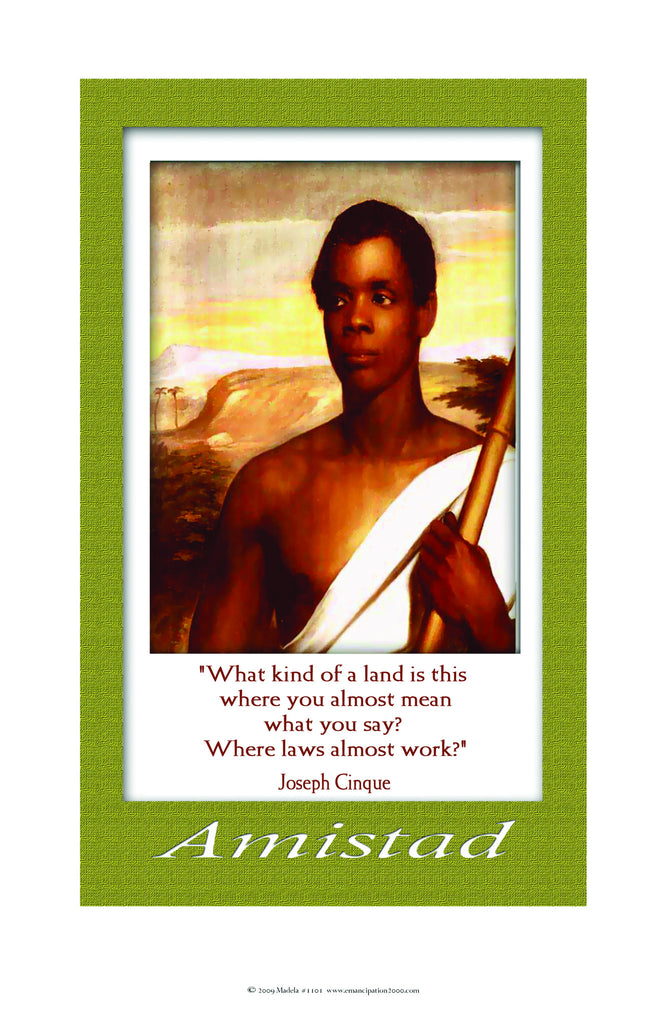Joseph Cinque #1101
$ 8.00
Caption from poster__
" What kind of a land is this
where you almost mean
what you say?
Where laws almost work? "
Sengbe Pieh (1815 – ca. 1879), later known as Joseph Cinqué, was a West African man of the Mende tribe who was the most prominent defendant in the Amistad case, in which it was proved that he and 52 others had been victims of the illegal Atlantic slave trade. Cinqué was born in 1815 in what is now Sierra Leone, but his exact date of birth is unknown. He was a married rice farmer with three children until he was captured by African slave traders illegally (violating many treaties) in 1839 and imprisoned on the Portuguese slave ship Tecora. He was taken to Cuba where he was sold with 52 others to Spaniards José Ruiz and Pedro Montez. They were transported on a ship called the Amistad, with the intention of reaching Cuban sugar plantations. However, on June 30 Cinqué led a revolt, killing the captain and the cook of the ship; two slaves also died, and two sailors escaped. The Africans took prisoner Ruiz and Montez, the two merchants who had made the purchase, and demanded that they direct the ship back to Sierra Leone, but instead they directed the ship towards the United States. After about two months, the Amistad reached United States waters near Long Island, New York. Members of the USS Washington came aboard, the Africans were charged with mutiny and murder, and they were taken to New Haven, Connecticut to await trial. The two Spaniards claimed that the Africans were already slaves in Cuba at the time of their purchase and were therefore legal property. Translators from Mende to English were found, allowing the Africans to tell their story to the court. Cinqué served as the group's informal representative. In March 1840, the Supreme Court of the United States ruled that the Africans mutinied to regain their freedom after being kidnapped and sold illegally. This was in large part due to the advocacy of former U.S. President John Quincy Adams, who served as the Africans' defense counsel. They were ordered to be permitted to return to Africa, against the protests of President Martin Van Buren. Cinqué and the other Africans reached their homeland in 1842. Once Cinqué returned, he was faced with civil war. His family and village no longer existed. Ostensibly, his family were killed or displaced by civil strife and war. He and his company maintained contact with the local mission for a while, but he eventually left to trade along the coast. Little is known of his later life, but rumors began circulating that he had become a merchant, chief or even a slave trader, [1] but no documented evidence supports this. The latter charge derives from apocryphal oral accounts from Africa and the 20th century author William A. Owens's claim that he had seen letters from AMA missionaries suggesting Cinqué was a slave trader. Most historians consider the suggestion speculative at best. A dying Cinqué is supposed to have returned to the mission in 1879, where he requested and received a proper Christian burial.
Print with Black Frames $25.00
For 24" x 36' Size prints
please call 678-608-7892 to order




